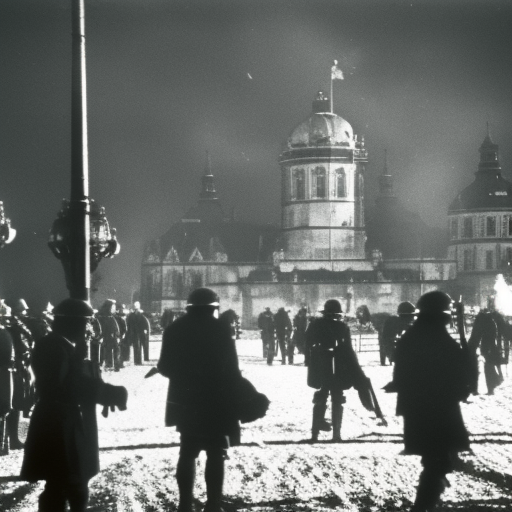Battle of Leipzig: The Turning Point of the Napoleonic Wars
The Battle of Leipzig, also known as the Battle of Nations, was a decisive conflict that took place from October 16 to October 19, 1813, during the Napoleonic Wars. It was fought between the French Empire, led by Emperor Napoleon Bonaparte, and a coalition of European powers, including Austria, Prussia, Russia, and Sweden. The battle marked a turning point in the war and ultimately led to Napoleon’s downfall.
Background:
By 1813, Napoleon’s empire had reached its peak, but his military campaigns had exhausted France’s resources. The other European powers, eager to overthrow Napoleon’s dominance, formed a coalition against him. The coalition aimed to liberate the countries that had been conquered by the French and restore the balance of power in Europe.
The Battle:
The Battle of Leipzig was fought near the city of Leipzig in Saxony, Germany. The coalition forces, numbering around 360,000 soldiers, faced Napoleon’s army of approximately 190,000 troops. The battle was fought on a vast scale, with multiple fronts and intense fighting over four days.
First Day:
On October 16, the coalition forces launched their attack on Napoleon’s positions. The fighting was fierce, but the French managed to hold their ground. However, they suffered heavy casualties, and their defensive lines were weakened.
Second Day:
On October 17, the coalition forces continued their assault, focusing on the French center. The Prussian and Russian troops made significant advances, pushing the French back. Napoleon attempted to counterattack but was unable to regain the lost ground.
Third Day:
October 18 saw the coalition forces intensify their attacks on the French flanks. The French army was stretched thin, and their positions became increasingly vulnerable. Despite Napoleon’s efforts to rally his troops, the coalition forces gained the upper hand.
Fourth Day:
On October 19, the coalition forces launched a final assault on the French positions. The French army, now heavily outnumbered and exhausted, could not withstand the onslaught. Napoleon’s forces were forced to retreat, and the coalition emerged victorious.
Aftermath:
The Battle of Leipzig was a devastating defeat for Napoleon. He lost approximately 70,000 soldiers, while the coalition forces suffered around 54,000 casualties. The defeat shattered Napoleon’s aura of invincibility and marked the beginning of his decline.
The battle had significant consequences for the Napoleonic Wars. The coalition forces continued their advance into France, and Napoleon was eventually forced to abdicate in 1814. The battle also led to the dissolution of the French Empire, as many of Napoleon’s former allies turned against him.
The Battle of Leipzig is considered one of the largest and bloodiest battles in European history. It demonstrated the strength of the coalition forces and their determination to defeat Napoleon. The battle also showcased the changing nature of warfare, with the use of massed artillery and infantry tactics.
In conclusion, the Battle of Leipzig was a turning point in the Napoleonic Wars. It marked the beginning of Napoleon’s downfall and the eventual restoration of the balance of power in Europe. The battle’s significance lies not only in its military outcome but also in its impact on the course of history.












